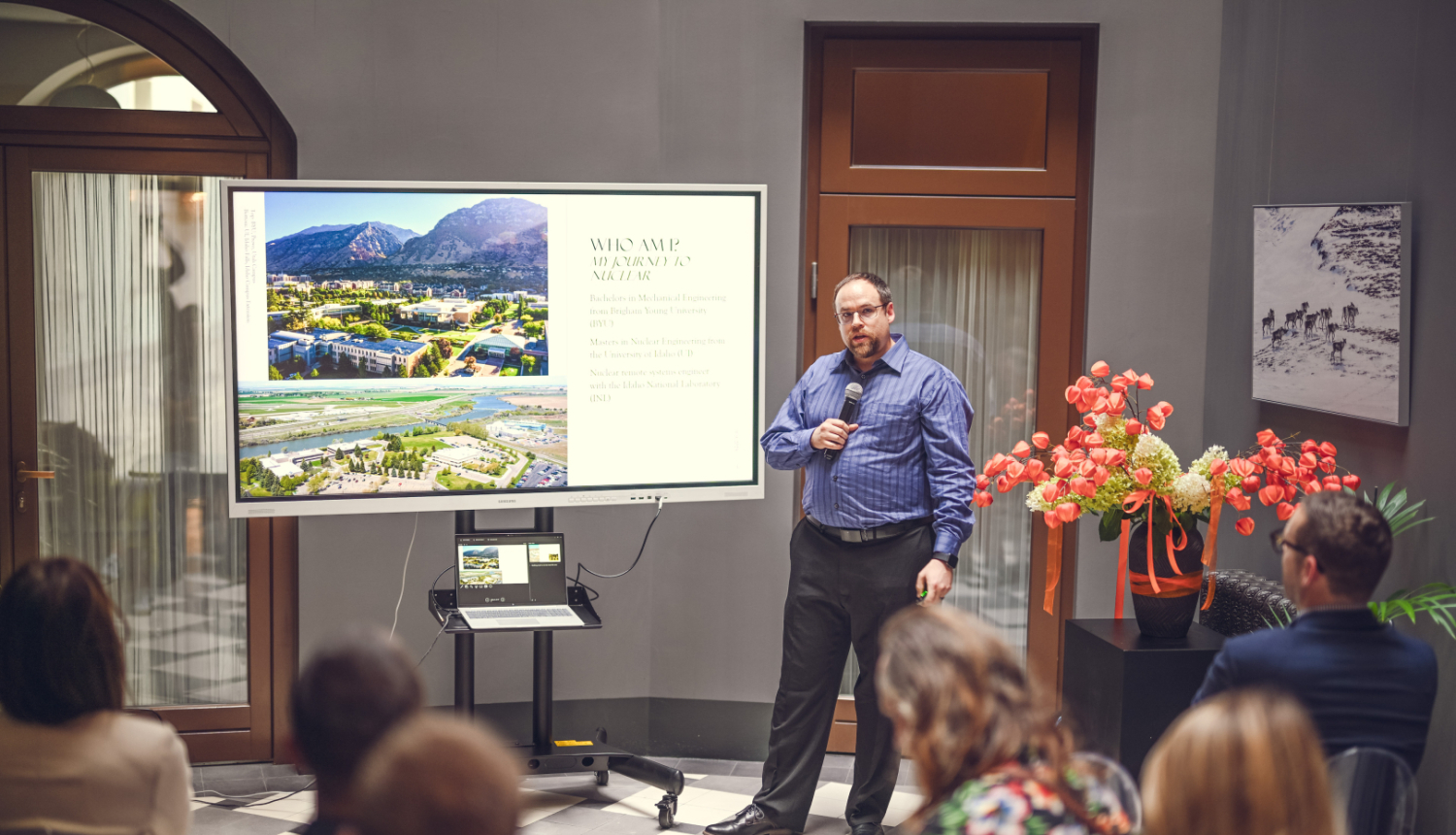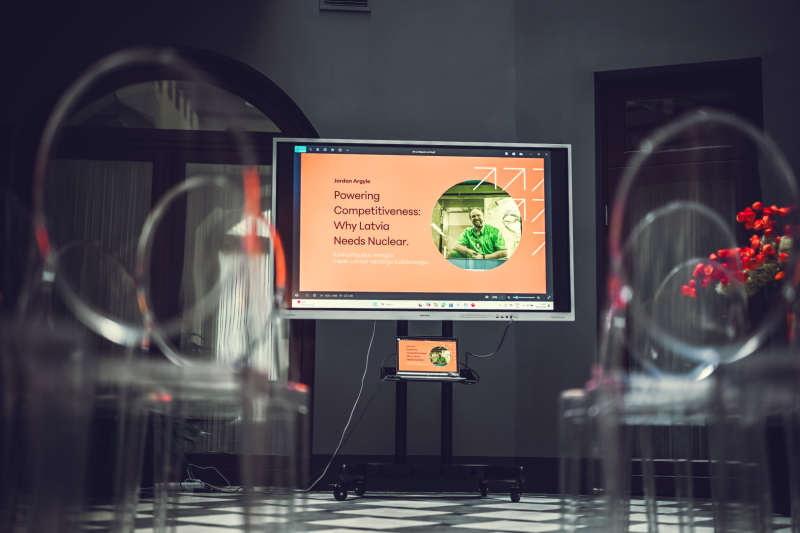Latvian industries are developing, but the very basis of competitiveness – reliable, accessible, and powerful energy – is lagging behind. In order to create industries that are capable of expanding, innovating and exporting at the level of Europe's strongest economies, Latvia must consider how to make capacity accessible. What else can nuclear energy offer Latvia? US nuclear engineer Jordan Argail gave a guest lecture on September 9.
On September 9 this year, nuclear engineer Jordan Argail from Idaho National Laboratory (USA) gave a guest lecture on the opportunities of nuclear energy and integrated energy systems for Latvian industry. The event was attended by representatives of the energy and industrial sectors, entrepreneurs, interested parties, and policymakers.
"Currently, connecting to the grid costs Latvian manufacturers millions in design and construction, as well as time and resources that are taken away from production start-up and growth. This hinders growth, deters investors and slows productivity. National-level solutions and the integration of nuclear energy could shift this burden to shared infrastructure, allowing industry to focus on what matters most – creating high value-added products," says event organizer Gunita Ķiesnere, member of the board of NP Properties.
In his guest lecture, Jordan mentions several advantages of nuclear energy: "It is reliable, predictable, and independent of weather conditions or geopolitics. Unlike fossil fuels, it is not dependent on global market fluctuations. Unlike renewable resources, it can provide a stable base load.
The discussion highlighted one of the most important conclusions – if Latvia wants to maintain and strengthen its competitiveness, it must find a way to ensure stable and high-capacity energy availability for industry, possibly by opening the door to nuclear energy and new technologies. In his guest lecture, Jordan shared global experience in nuclear energy production and highlighted specific examples of how to ensure Latvia's integrated energy system (IES).
Integrated energy systems combine nuclear energy with renewable resources, hydrogen production, and industrial heat utilization to optimize both energy supply and demand. Experience in Ontario, Canada, shows that such systems reduce emissions, stabilize the grid, and create new industries.
"Latvia's consumption is only 3.7 MWh per capita, well below the EU average and far from the level of the Nordic countries. If we want to compete, we need to double this figure," admits Jānis Vītols, product manager at NP Energy.
Concluding his guest lecture, Jordan listed several key factors why Latvia should include nuclear energy in its future plans - the ability to provide high-capacity energy to manufacturing sectors; the emergence of new industries (hydrogen, chemicals, new materials) and competitive advantages – less volatility, faster access to capacity.




